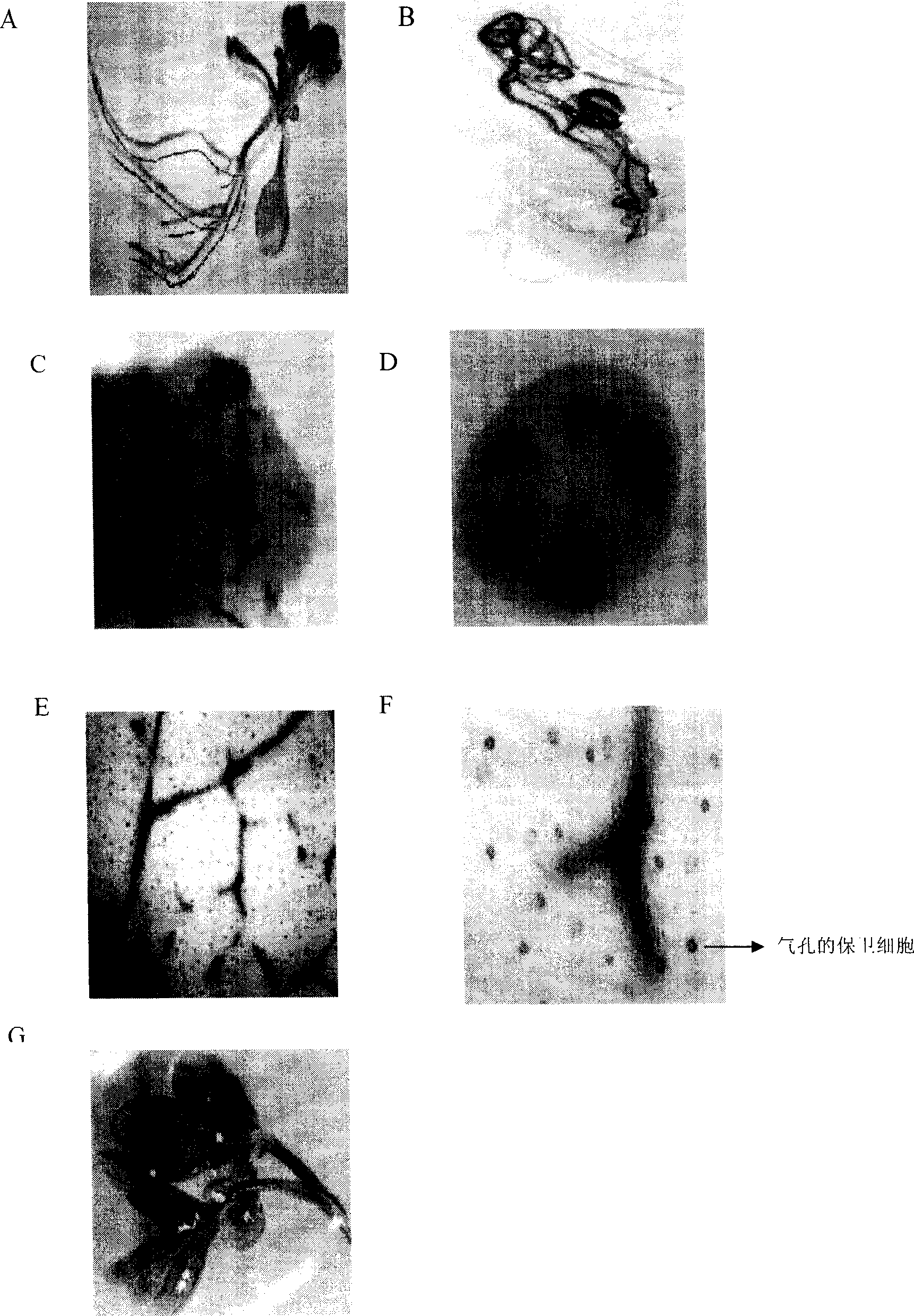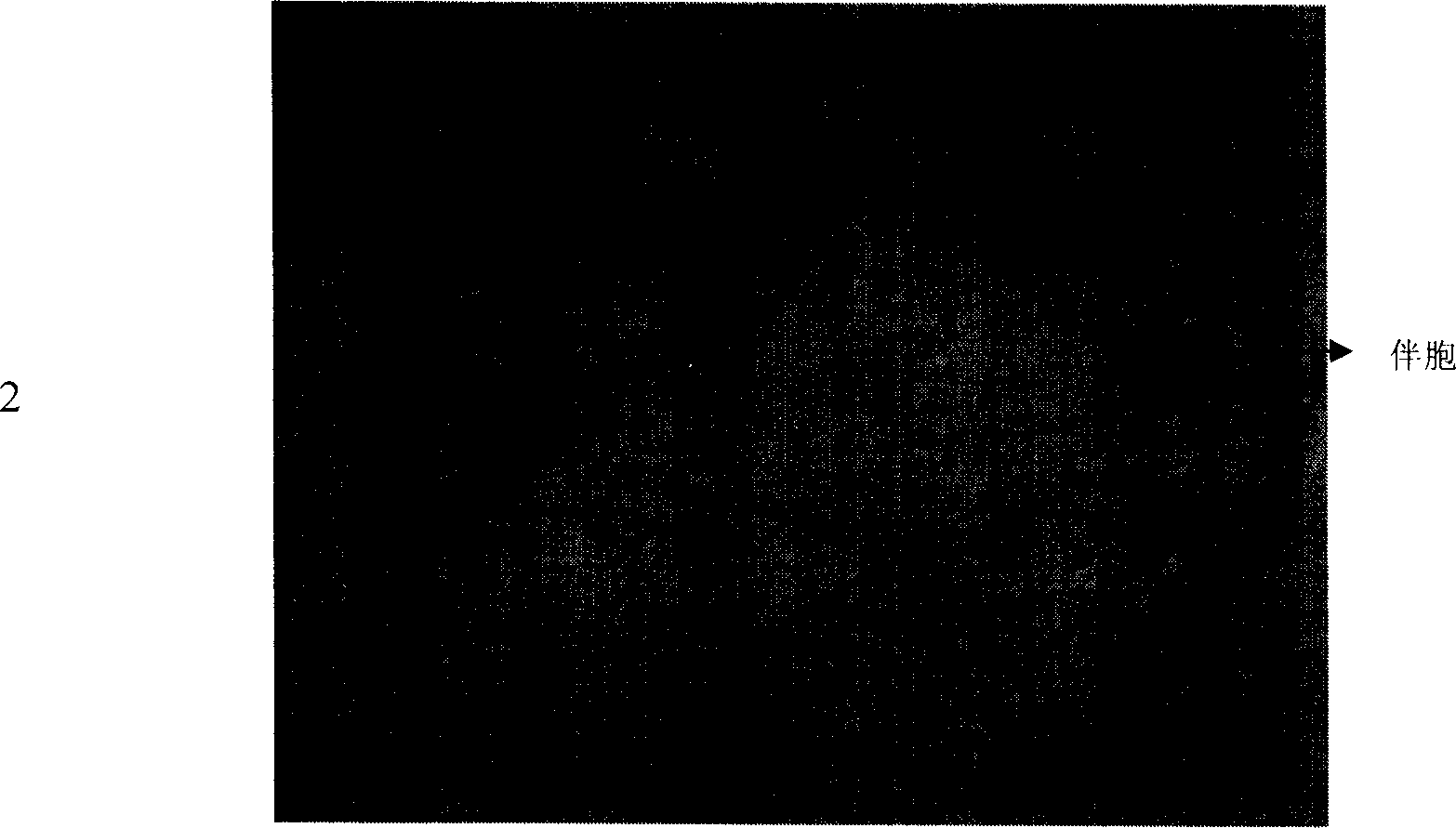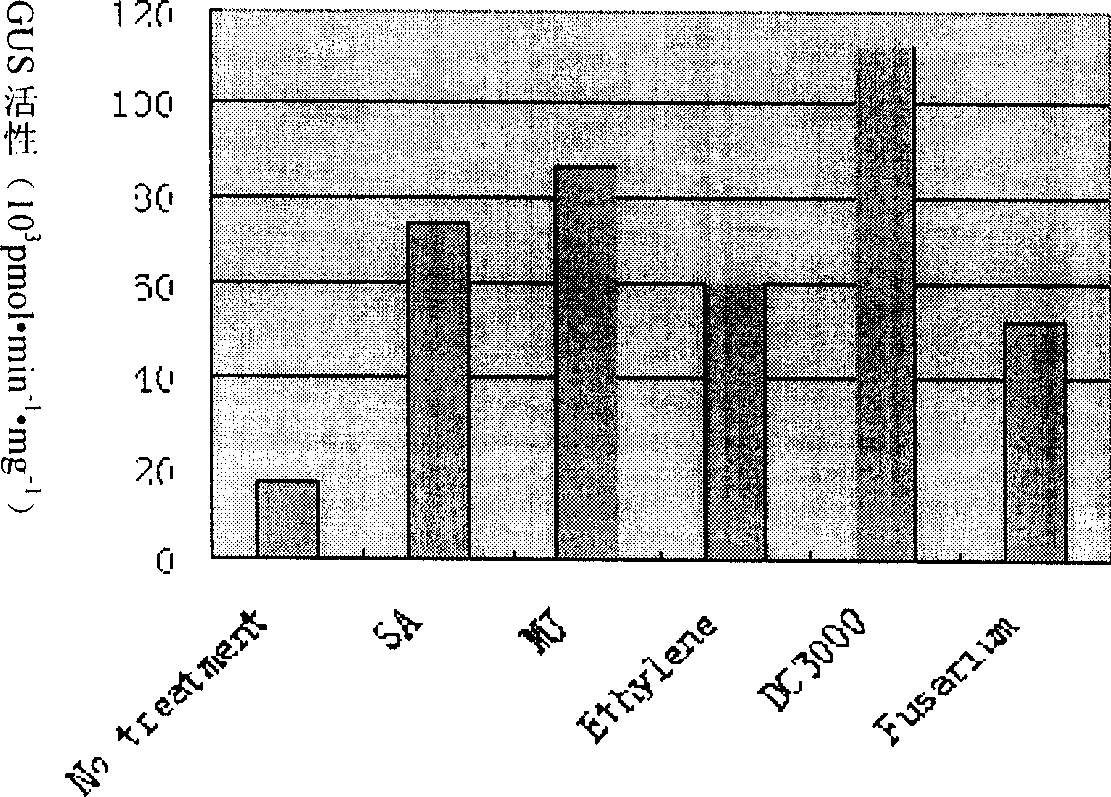Cotton tissue specific and pathogenic bacterium inducing promoter and its use
A tissue-specific, promoter technology, applied in the biological field, can solve the problems of cotton disease resistance gene isolation and functional research that have not been reported.
- Summary
- Abstract
- Description
- Claims
- Application Information
AI Technical Summary
Problems solved by technology
Method used
Image
Examples
Embodiment Construction
[0025] The methods used in the following embodiments are conventional methods unless otherwise specified. The primer sequences used are all synthesized by Shanghai Boya Biotechnology Co., Ltd., and the percentages are all percentages by mass. The upland cotton (Gossypium.hirsutum) varieties used in this experiment are all Chang Kang cotton (Lu Haosheng, Pu Weixin, Huangfu Guohua, Yin Huiyu, Dai Xin. A new high-resistance to deciduous verticillium wilt-Chang Kang cotton. China Cotton 1997 11:26-27.), Arabidopsis varieties are Colombian (Lin X, Kaul S, Rounsley S, Shea TP, Benito MI, Town CD, Fujii CY, Mason T, BowmanCL, Barnstead M, Feldblyum TV, Buell CR, Ketchum KA, Lee J, Ronning CM, Koo HL, Moffat KS, Cronin LA, Shen M, Pai G, Van Aken S, Umayam L, Tallon LJ, Gill JE, AdamsMD, Carrera AJ, Creasy TH, Goodman HM, Somerville CR, Copenhaver GP, Preuss D, Nierman WC, White O, Eisen JA, Salzberg SL, Fraser CM, Venter JC. Sequence and analysis of chromosome 2 of the plant Arabidopsis ...
PUM
 Login to View More
Login to View More Abstract
Description
Claims
Application Information
 Login to View More
Login to View More - R&D
- Intellectual Property
- Life Sciences
- Materials
- Tech Scout
- Unparalleled Data Quality
- Higher Quality Content
- 60% Fewer Hallucinations
Browse by: Latest US Patents, China's latest patents, Technical Efficacy Thesaurus, Application Domain, Technology Topic, Popular Technical Reports.
© 2025 PatSnap. All rights reserved.Legal|Privacy policy|Modern Slavery Act Transparency Statement|Sitemap|About US| Contact US: help@patsnap.com



